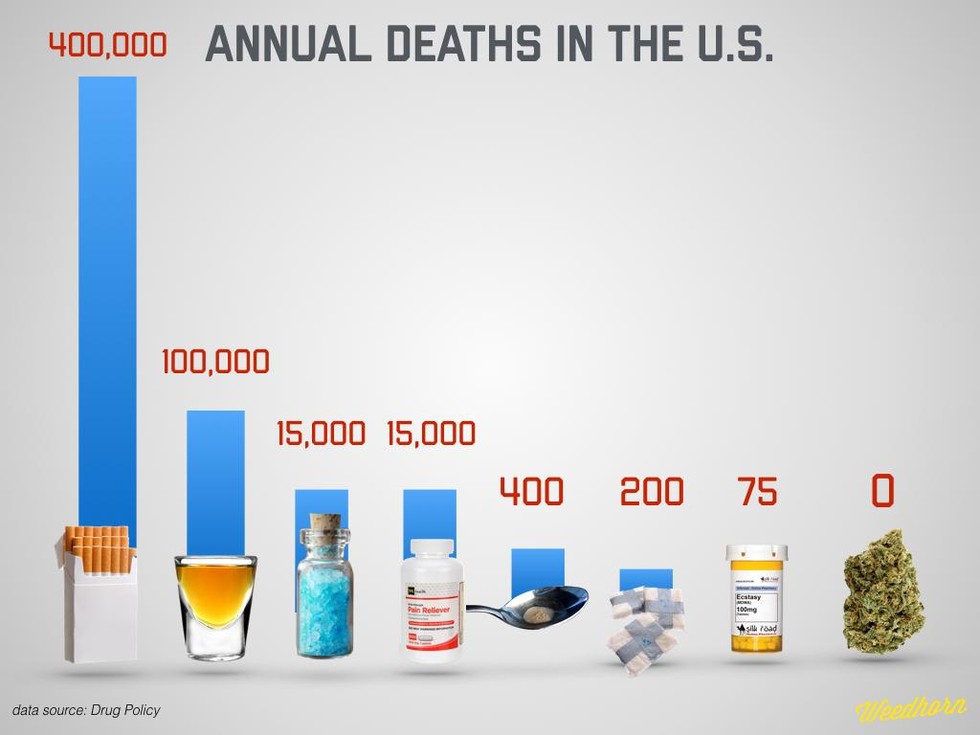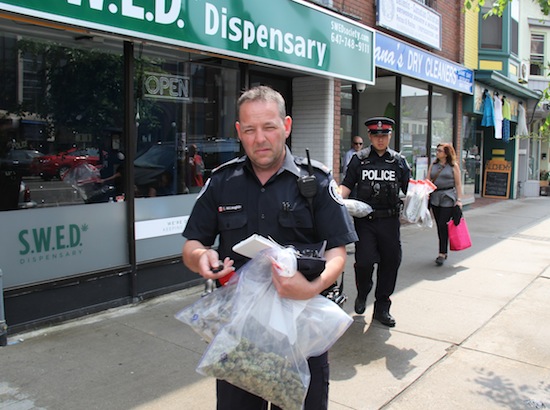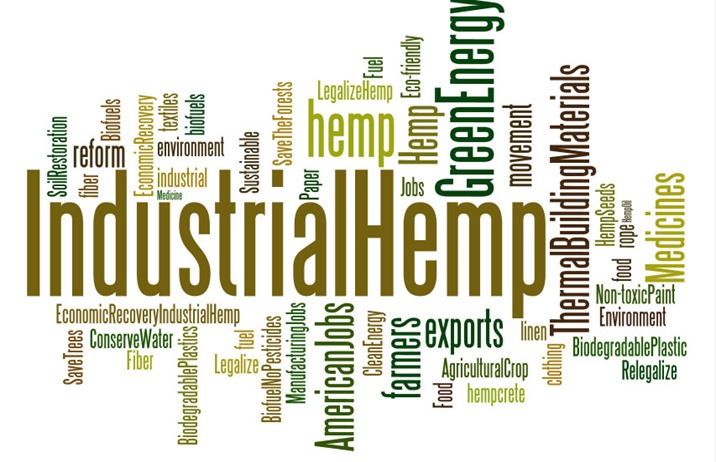Ted Smith
Questions – Minimizing Harms of Use
This is my answer to the first of five surveys the federal government task force has created to guide them as they introduce laws to legalize cannabis. Over the next 4 weeks I will be posting my responses. Everyone has until August 28 to fill in these surveys. Please encourage as many people as possible to respond.
These actions may seem well-intended but it is my firm belief that the result of strict regulations will have many of the opposite results that are hoped for, especially the uprooting of so-called organized crime and the protection of youth. Generally the proposed options appear more than the law governing alcohol and tobacco, which are both more harmful substances. If this task force hopes to retain credibility and create workable laws that deserve the respect of the craft cannabis industry, then it must be careful to use sound science and logic in order to achieve the best outcomes of legalization.
 Advertising rules should be similar to alcohol and do not need to be as restrictive as tobacco to protect the public or youth. Tobacco is a very dangerous substance with no health benefits and severe negative health consequences, therefore deserving tighter regulations than cannabis in regards to advertising and packaging. While it might appear to be the same from the outside, smoking tobacco has been proven to cause many health problems, while the negative consequences of smoking cannabis are much less quantifiable.
Advertising rules should be similar to alcohol and do not need to be as restrictive as tobacco to protect the public or youth. Tobacco is a very dangerous substance with no health benefits and severe negative health consequences, therefore deserving tighter regulations than cannabis in regards to advertising and packaging. While it might appear to be the same from the outside, smoking tobacco has been proven to cause many health problems, while the negative consequences of smoking cannabis are much less quantifiable.
Allowing cannabis producers, distributors and cafes to advertise like the alcohol industry seems much more appropriate and realistic. There is no logical reason to restrict advertising more for cannabis than alcohol. If one of the goals of legalization is to convince the public to stop purchasing from street dealers then allowing advertising should be a priority.
Educating youth and the public about the proper methods to produce and consume cannabis and the scientific reasons for waiting to become an adult to consume are the best methods the government could use to minimize the potential harms from cannabis. Alcohol is a far more dangerous substance and yet we allow companies selling booze to engage in mass advertising campaigns, sponsoring major events and promoting their products on television. Cannabis distributors should have the same opportunities as beer companies when it comes to advertising or the laws will be arbitrary and unconstitutional.
It is not like the government is introducing a new drug that many more people will start using when it is legal. Some more people may start using cannabis for medical purposes that did not use alcohol or tobacco before, but the majority of cannabis users when it is made legal will be people who are used it already. The vast majority of consumers purchase from illegal sources and they will need incentive to purchase from a legal distributor. If the government truly wishes to convince people they need to stop supporting illegal operations ,then allowing companies to promote their brand and services would be the best way to encourage consumers to make a smooth transition into the legal market.
It is absurd to hear the government speak of off-setting the policing costs of legalization after it has been willing to virtually pour money and lives down the drain for years. There is no evidence from areas that have legalized that there are any noticeable increase in policing costs and there is no doubt that there will be costs savings with legalization. Of course cannabis should be taxed but those taxes need to be within reason if the government truly wishes to undermine organized crime and encourage people to purchase legal cannabis.
If the government is serious about forcing so-called organized crime out of the cannabis trade, then it should try to help bring the prices down to ¼ to ⅓ the current prices, which are dramatically inflated due to prohibition. If the prices remain close to current prices, then there will be a lot of incentive for people to grow and sell cannabis outside of the regulatory system as they will not be paying taxes or other costs associated with running a legitimate business. Many current consumers will continue to use illegal sources if the prices legal distributors are charging are not lower.
Restrictions on potency will have the opposite effect that the stated goals. If the government creates unreasonable restrictions on the potency of cannabis products it will ensure a thriving underground economy. Criminal organizations will pounce on any opportunity they have to produce and sell cannabis products prohibited by law, especially since consumers are used to having access to high potency herb and by-products.
To create a restriction on the amount of THC in the plant itself is absurd because there is no great risk to the user using high potency herb. In fact, when it comes to the potential negative impacts of smoking cannabis it would make more sense to have a minimum amount of THC in the herb, as people tend to smoke more plant material when it is not as potent as they desire. Smoking cannabis high in THC helps the users achieve the state of relaxation they are seeking without having to chain smoke joints or use big bongs.
These restrictions will also encourage people to grow their own cannabis and produce their own extracts, as it will be impossible to force everyone to test their own plants and report to the government. Individuals and organizations wishing to grow or use illegal high potency cannabis products easily will be able avoid detection from authorities, especially since most people will consider the restrictions a joke. Placing restrictions on the amount of THC in the plant will make the government appear completely out of step with reality and will give many legitimate reasons to continue working outside of the law.
When it comes to requiring testing for pesticides, fertilizers and moulds, the government needs to be careful not to force growers to test so many things that the cost is prohibitive. Many people have been safely growing and smoking herb for decades without testing everything, and have not suffered any noticeable impacts as a result. While some testing makes sense to ensure cannabis products are safe for consumers, requiring producers to test too much could discourage participation in the legal market for many small growers.
Instead of placing limits on the amount of THC in edible products, the government should focus on requiring proper testing, packaging and labeling so consumers know what they are purchasing. Certainly when it comes to packaging and labeling there needs to be clear messages that display the amount of THC contained in the product, as well as a list of other ingredients if anything other than raw herb. Using packaging that does not allow a person to see what is inside might be one way to stop youth from eating cannabis products, along with a clear warning for youth not to consume what is inside.
Youth should not be gaining access to cannabis products, whether there are limits on THC content or not. Claiming that having a THC limit to protect youth, when they should not be using it in the first place, as another attempt by the government to wave kids around as an excuse for harsh laws when there is little evidence those harsh laws will have the desired outcomes. Proper packaging and labeling will help stop youth from consuming cannabis products, but pretending limits on THC will protect children is a weak claim at best.
Placing limits on how much a person can possess is not fair for those wishing to grow enough herb outdoors to supply themselves for the year. The only limit that should be considered is a one year supply. We are allowed to grow 15 kgs of tobacco. There are no such limits for alcohol and any attempt to place a limit will be met with great resistance and ultimately cost the government a lot of money to lose in court.
 Limiting where cannabis can be sold in ways that are any different or strict than alcohol or tobacco dealers is also arbitrary and unreasonable. Bars and restaurants selling booze are allowed to exist beside each other, and corner stores selling tobacco exist all over.
Limiting where cannabis can be sold in ways that are any different or strict than alcohol or tobacco dealers is also arbitrary and unreasonable. Bars and restaurants selling booze are allowed to exist beside each other, and corner stores selling tobacco exist all over.
Ultimately if the government proceeds with these restrictions they will ensure plenty of opportunities for organized criminal organizations to illegally sell cannabis products. While it is the instinct of law enforcement and health officials to create tight regulations, there is little evidence those tight regulations will have all of the desired outcomes and much evidence that organized crime will jump on any opportunities new prohibitions will create.
Reasonable restrictions will help develop a flourishing cannabis industry, tight regulations will create chaos and encourage trade in illegal cannabis products.
2) Eighteen should be the minimum age to purchase. Most science indicates that there are minimal real health risks for most people over the age of 16, which was one of the major findings in the 2002 Senate report. If someone is considered an adult and able to join the army and go to war for our country, then they should have the privilege of purchasing a substance safer than alcohol and tobacco. If the age limit is set to 25, the government will ensure a thriving black market continues to exist supplying young adults.
Fill out the Surveys at the following Links:
Minimizing Harms of Use
Do you believe that these measures are appropriate to achieve the overarching objectives to minimize harms, and in particular to protect children and youth? Are there other actions which the Government should consider enacting alongside these measures? (Maximum 1,500 words – to safeguard privacy please do not provide details that would disclose your individual identity or the identity of others)
What are your views on the minimum age for purchasing and possessing marijuana? Should the minimum age be consistent across Canada, or is it acceptable that there be variation amongst provinces and territories? (Maximum 1,500 words – to safeguard privacy please do not provide details that would disclose your individual identity or the identity of others)



![Copyright Jorge Cervantes [#Beginning of Shooting Data Section] Nikon D100 2003/05/02 18:55:38.1 JPEG (8-bit) Fine Image Size: Large (3008 x 2000) Lens: 15-31mm f/3.5-4.5 D Focal Length: 15mm Exposure Mode: Aperture Priority Metering Mode: Multi-Pattern 1/180 sec - f/8 Exposure Comp.: 0 EV Sensitivity: ISO 400 White Balance: Incandescent +3 AF Mode: AF-S Tone Comp: Auto Flash Sync Mode: Front Curtain Auto Flash Mode: Manual Color Mode: Mode II (Adobe RGB) Hue Adjustment: 0° Sharpening: Auto Noise Reduction: OFF Image Comment: [#End of Shooting Data Section]](http://cannabisdigest.ca/wp-content/uploads/2016/07/Grow-Room-Reflect-Walls-Silver.jpg)


